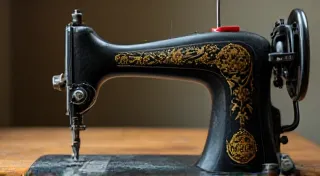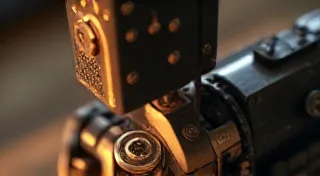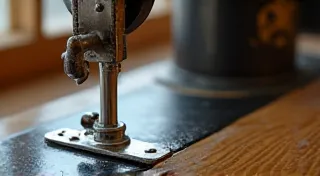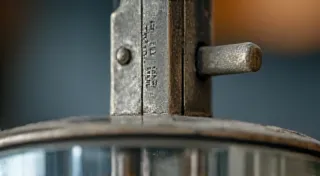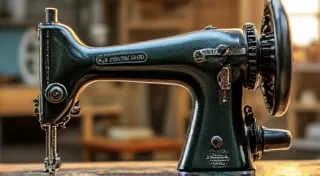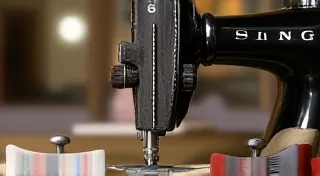Troubleshooting a Sticking Bobbin Winder: A Step-by-Step Guide
The bobbin winder is a crucial feature of many vintage sewing machines, significantly streamlining the process of preparing bobbins for sewing. However, like all mechanical components, it’s prone to issues. A sticking or malfunctioning bobbin winder can be frustrating, slowing down your sewing projects and making you question the machine's overall health. This guide will provide a step-by-step approach to troubleshooting common bobbin winder problems, helping you diagnose and resolve the issue, ensuring your vintage sewing machine continues to operate smoothly. Understanding the underlying mechanisms is key, and if you're experiencing broader issues with your machine's motor, it’s worth examining related components—a task that might necessitate replacing a sewing machine belt, for instance.
Understanding the Bobbin Winder Mechanism
Before diving into troubleshooting, it’s helpful to understand how the bobbin winder works. Generally, it involves a winding lever connected to a winding spindle. When the main machine handwheel is turned, it engages the winding mechanism, causing the spindle to rotate and wind the bobbin. A tension disc regulates thread flow, controlling the tightness and evenness of the winding. A release lever or similar mechanism stops the winding when the bobbin is full. The elegance of these older designs is something to appreciate – particularly if you’re working with a machine like the Singer 201. The beauty and complexity of its operation makes deeper investigation rewarding, and exploring the evolution of the Singer 201 offers insights into its ingenious construction and its place in the history of sewing technology.
Common Causes of a Sticking Bobbin Winder
Several factors can contribute to a sticking bobbin winder. Here’s a breakdown of the most frequent culprits:
- Thread Tension Issues: Incorrect tension on the thread path to the bobbin winder is a primary cause. Too much tension can create resistance, while too little can lead to uneven winding and tangling.
- Friction Points: Dust, lint, and old lubricant can accumulate, creating friction and hindering the smooth operation of the winder's moving parts.
- Mechanical Obstructions: Bent or misaligned components, stuck levers, or broken springs can physically obstruct the winder’s movement.
- Dry or Degraded Lubrication: Vintage machines rely on lubrication to minimize friction. Over time, this lubricant dries out or degrades, making the movement stiff. This can often be a symptom of larger machine wear and tear.
- Incorrect Bobbin Size: Using a bobbin that is too large or too small for the winder can cause binding and prevent smooth winding.
Step-by-Step Troubleshooting Guide
- Visual Inspection: Begin with a thorough visual inspection of the entire bobbin winder mechanism. Look for obvious signs of damage, such as bent levers, broken springs, or tangled thread. Pay close attention to the tension disc and the thread path.
- Thread Path Assessment: Ensure the thread is correctly threaded through the bobbin winder mechanism. Consult your machine’s manual for the correct threading sequence. Even a slight deviation can affect the winding process. Incorrect threading is a frequent cause of frustration and inefficiency. If you're dealing with a classic machine like the Singer 201, understanding its unique design and potential quirks is invaluable. The machine's evolution over time has led to some subtle, but important, differences in threading sequences that can impact performance.
- Tension Disc Adjustment: The tension disc is critical. Experiment with adjusting the tension. Some machines have adjustable screws, while others might require you to carefully loosen or tighten the disc itself. A little adjustment can go a long way.
- Cleaning and Lubrication: Cleaning is a vital first step. Use a small brush (like an old toothbrush) and a lint-removing tool to carefully remove dust and lint from all the moving parts of the winder. Afterwards, apply a sewing machine oil specifically designed for vintage machines. Apply a tiny amount to each moving part. Don’t over-lubricate, as this can attract more dust. Remember that many older machines were not designed for the high-speed operation common with modern sewing practices, so consistent lubrication is essential to maintain performance.
- Lever and Spring Check: Examine the release lever and any associated springs. Ensure the lever moves freely and the spring isn't bent or broken. If a spring is weak, it may need to be replaced. A stuck lever prevents the bobbin from disengaging when full.
- Bobbin Size Verification: Double-check that you’re using the correct size bobbin for your machine. The bobbin should fit snugly on the spindle without binding. Consult your machine’s manual for the correct bobbin specifications. Using the wrong bobbin can not only cause the winder to stick but can also damage the internal mechanisms.
- Movement Check: Manually rotate the bobbin winder spindle. It should move smoothly and freely. If it feels stiff or catches, identify the point of resistance and investigate further. This might involve carefully disassembling the mechanism (see cautionary notes below). The sensation of resistance is a crucial diagnostic clue.
- Alignment Check: Sometimes, a lever or guide arm can become slightly misaligned. Carefully inspect for any visible misalignment and gently nudge it back into place.
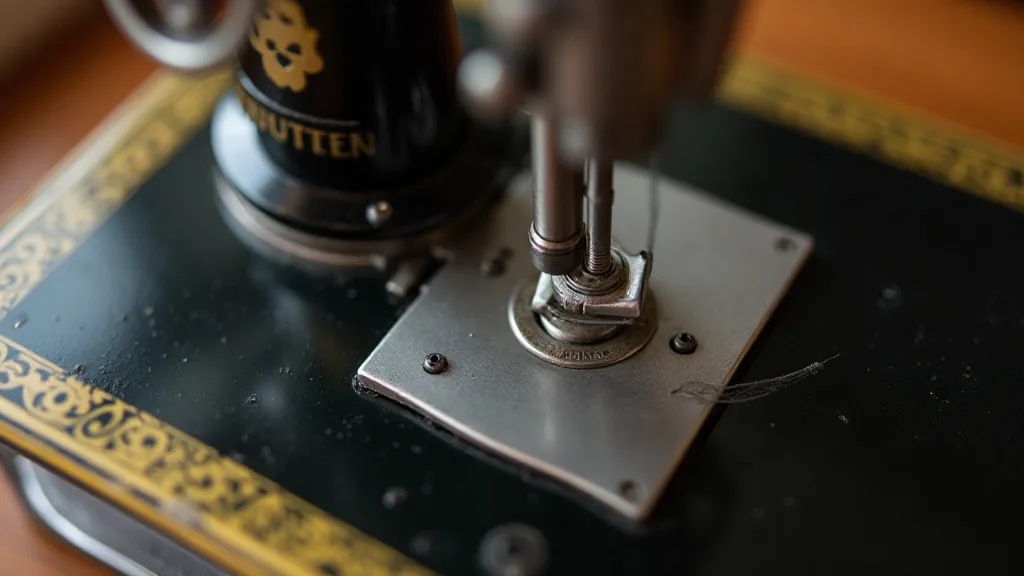
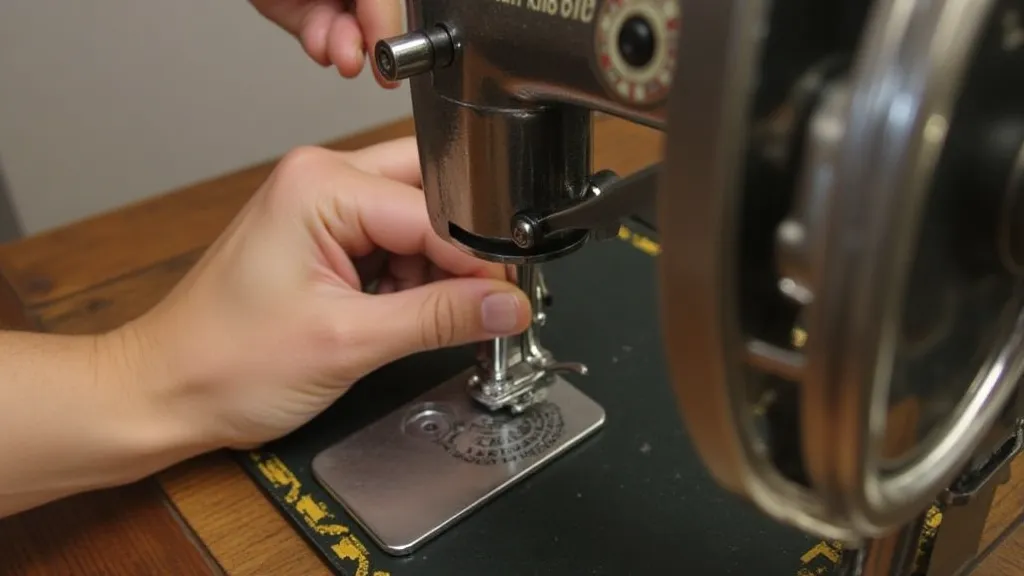
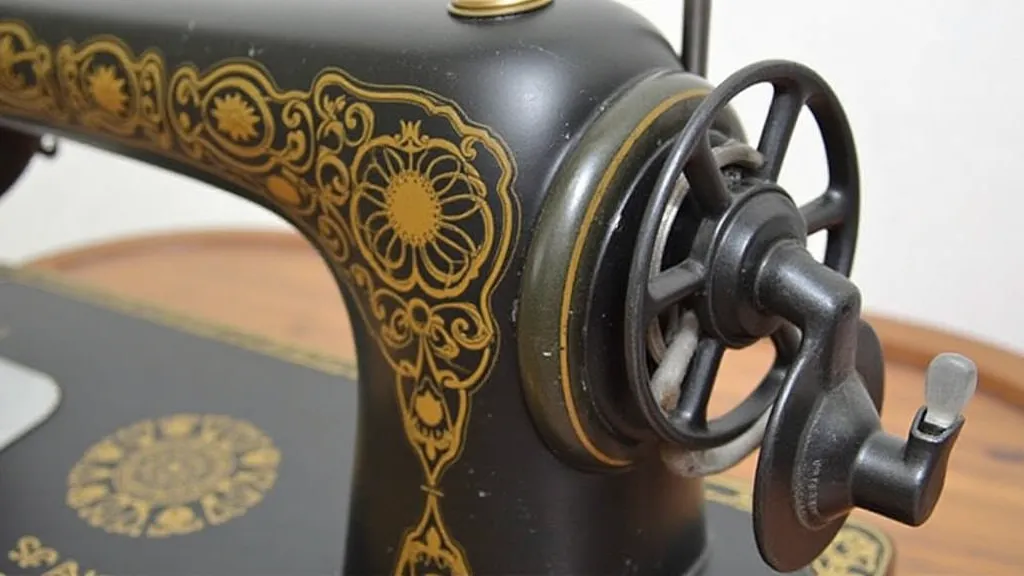
Cautionary Notes & Advanced Troubleshooting
Disassembly is a Last Resort: While complete disassembly might be necessary in some cases, it's strongly advised against unless you are comfortable with mechanical repairs and have the appropriate tools. Vintage sewing machines are complex, and incorrect reassembly can cause further damage. If you’re experiencing issues beyond a simple sticking, like intermittent motor function, the challenge might be greater and require more extensive troubleshooting. If you're using a Singer Featherweight, for instance, understanding replacing common Singer Featherweight motor brushes can be vital for its proper function. These machines, while beautifully engineered, require a delicate touch and a thorough understanding of their internal workings.
Parts Sourcing: Replacing damaged parts can be challenging. Many vintage sewing machine parts are no longer manufactured. You may need to search online marketplaces specializing in antique sewing machine parts, or check with local repair shops that may have a parts inventory. Be prepared for a bit of detective work when sourcing parts; patience and persistence are key.
Consult the Manual: Your machine’s manual is an invaluable resource. It typically contains diagrams and troubleshooting tips specific to your model. If you don't have the original manual, try searching online; many vintage machine manuals are available as digital downloads. Understanding the underlying cause of instability issues with the needle bar can also contribute to an overall healthy machine operation – it’s a good idea to review understanding and fixing needle bar instability.
Preventative Maintenance
Regular maintenance can prevent bobbin winder issues from arising in the first place:
- Clean Regularly: Wipe down the bobbin winder mechanism with a lint brush after each use.
- Lubricate Periodically: Apply a small amount of sewing machine oil every few months, or as needed.
- Inspect for Wear: Periodically inspect the winder for signs of wear or damage. Address any issues promptly.
Vintage sewing machines are more than just tools; they are pieces of history and craftsmanship. By following these troubleshooting steps and implementing preventative maintenance practices, you can keep your vintage sewing machine's bobbin winder operating smoothly for years to come, allowing you to enjoy the unique charm and functionality of these classic machines. Understanding the history and design can offer valuable insights, and exploring resources like the evolution of the Singer 201 can enhance your appreciation and troubleshooting abilities. Consistent care ensures not only the machine's longevity but also a rewarding sewing experience.
